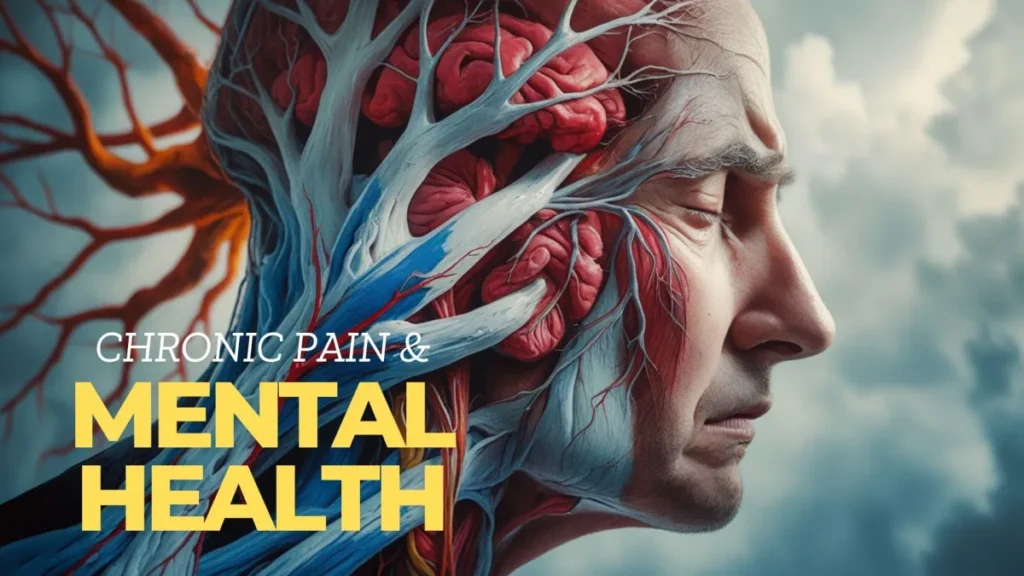Vaping – The Double-Edged Sword Reshaping Public Health
Vaping vs Smoking: Cessation Aid or Health Threat
Vaping’s been a hot topic for over a decade now—some swear by it as a lifeline to ditch cigarettes, while others see it as a ticking time bomb for our health, especially among the younger crowd. As we roll into 2025, the debate’s only getting louder. Could this cloud-chasing habit really help smokers kick the butts for good, or are we just swapping one addiction for another with scarier unknowns? Let’s break it down—because whether you’re puffing to quit or just curious, the health angle matters.
Key Takeaways
-
What’s in the Cloud? Vapes deliver nicotine and some nasty chemicals—fewer than cigs, sure, but still not risk-free. Research is digging into what this means short-term and down the road.
-
Kids and Nicotine Don’t Mix. Teens’ brains are still wiring up, and vaping’s hooking them fast—addiction’s a real worry for middle and high schoolers.
-
Double Trouble. Mixing vaping with smoking (dual use) can pump more toxins into your system and mess up your lungs worse than sticking to one or the other.
-
Safety Scares. From seizures (mostly in youth) to exploding batteries, vaping’s got some hazards—faulty devices can even land you in the ER.
-
Mental Health Link. Stressed? Anxious? Lots of folks, especially younger ones, vape to cope, but it might just lock them into a nicotine loop.
Historical Context of Vaping
How E-Cigs Got Started (2003-2024)
Back in 2003, a Chinese pharmacist named Hon Lik sparked a revolution—he invented the first e-cigarette after losing his dad to smoking-related illness. It was a simple gizmo that heated nicotine-laced liquid into vapor, offering a new way to get that buzz without the tar. Fast forward to today, and vaping gear’s gone from basic “cig-a-likes” to high-tech mods you can tweak like a gaming rig.
The Global Boom
The vaping market exploded from a $2.8 billion niche in 2014 to a whopping $22.4 billion beast by 2023. Tech got slicker, flavours got wilder, and everyone from ex-smokers to curious teens jumped on board. Big tobacco companies smelled the cash, snapping up vape brands and pouring money into their own lines—think of it as the cigarette industry’s glow-up.
Rules of the Game
Governments weren’t ready for vaping’s rise. Early days were a free-for-all, but by 2016, the U.S. FDA said, “Enough,” slapping rules on e-cigs like they did cigarettes—think ingredient lists and ad crackdowns. Globally, it’s a mixed bag: some places ban vapes outright, others keep them on a tight leash. It’s all about balancing adult access with keeping kids away.
Current State of Vaping Tech
Gadgets Galore
Today’s vape scene’s got something for everyone:
Pod Systems: Easy for newbies.
Mods: Customise your clouds.
Disposables: Grab-and-go vibes.
Smart Vapes: Track your puffs with an app.
Cool, right? But safety’s still a question mark—batteries can go boom if they’re dodgy.
What’s in the Juice?
E-liquids mix propylene glycol, vegetable glycerin, nicotine, and flavours—think of it like a recipe for your vape’s personality. That mix decides how thick the cloud is and how it hits your throat. Problem is, science says some of those flavour chemicals might not play nice with your lungs—research is still sniffing that out.
Delivery Upgrades
Modern vapes use fancy atomisers and wicks to fine-tune your nicotine hit. Better airflow, hotter coils—it’s all about control. Manufacturers are obsessed with making it smoother, but health experts are like, “Hold up, we need more data on what’s getting into your system.”
Health Implications
Breathing Easy? Not Quite
Vaping’s not the lung-friendly dream some hoped. Studies show it can inflame your airways, leaving you coughing or gasping more than you’d like. Those aerosols? They’ve got metals and chemicals linked to serious lung injuries—think popcorn lung vibes, especially for young vapers who hit it hard.
Heart on the Line
About two-thirds of regular vapers report heart-related gripes—racing pulses, high blood pressure, you name it. Nicotine’s the culprit, stiffening arteries like it does with smokes, though maybe not as bad. Still, your ticker’s not thrilled, and long-term risks are TBD.
The Long Haul
By 2026, we’ll know more, but right now, vaping’s a gamble. Fewer toxins than cigarettes? Sure. But heavy metals and weird compounds still sneak in. Dual users—those juggling cigs and vapes—might be rolling the dice hardest, stacking risks higher than solo players.
Smoking Cessation: Does It Work?
What the Studies Say
Vaping’s a mixed bag for quitting. Some smokers swap tar for vapour and never look back—success rates hover around 18-28%, beating nicotine patches (15-24%). But it’s not a magic wand; you’ve got to want it, and a doc’s guidance bumps your odds big-time.
Doc’s Take
Most healthcare pros (70%) see vaping as a quitter’s tool but aren’t sold on it long-term. They’re worried about dual use ramping up toxins and nicotine keeping you hooked. It’s all about tailoring it—vaping might work for you, but it’s not one-size-fits-all.
![]()
Youth Vaping Crisis
The Numbers
In 2023, over 2 million U.S. teens vaped—14.1% of high schoolers (about 1 in 7). Australia’s not far behind, with 1 in 6 kids aged 14-17 trying it by 2022, per the National Drug Strategy Household Survey. Disposables are king now—over half of teen sales—cheap, fruity, and way too easy to snag.
Social Media Trap
Brands hit up TikTok and Insta hard—89% of teens see vape ads there. Influencers push mango clouds like it’s candy, dodging ad bans with sneaky posts. It’s working: flavours like bubblegum are teen magnets, even with crackdowns.
School Pushback
Schools are fighting back—education programs cut vaping by up to 28%. Think workshops, ex-vaper stories, even vape detectors in bathrooms. It’s a team effort—parents, peers, and teachers all in to keep kids off the puff.
Regulatory Rundown
Global Scene
The World Health Organisation wants tight rules. Brazil and India say no vapes, period. The EU caps nicotine at 20mg/ml. It’s a worldwide tug-of-war—help smokers vs. shield kids.
U.S. and Aus
In the U.S., every vape needs FDA approval—age checks, flavour limits, the works. Australia’s on it too: since 2024, you need a prescription for nicotine vapes, aiming to curb youth access while letting smokers switch.
Local Flavour
States and cities pile on—bans indoors, extra taxes, 21+ age limits. Australia’s states ban non-prescription sales too. It’s a patchwork, but the goal’s the same: health first.
Economic and Environmental Angles
Healthcare Hit
Vaping-related illnesses could cost $15 billion by 2025—think lung treatments and addiction clinics. Australia’s healthcare system’s feeling it too, with rising respiratory cases tied to vaping.
Cash Flow
The vape biz is set to hit $67 billion globally by 2025—ex-smokers and newbies (especially young adults) fuel it. It’s a goldmine, but critics say it’s banking on addiction.
Green Woes
Disposables are trash nightmares—6.8 billion tossed by 2025, most not recycled. Batteries leak toxins, plastics clog oceans. It’s a mess cig butts never dreamed of.
Conclusion
Vaping’s a wild ride in 2025. For smokers desperate to quit, it’s a lifeline—less tar, maybe a step out. But for teens, it’s a trap—addictive, risky, and everywhere. Health pros and lawmakers are scrambling: keep it for quitters, kill it for kids. The science is catching up, but until then, it’s your call—puff wisely.
FAQ
Q: What health impacts should we expect from vaping by 2025?
A: It’s a split bag—vaping might ease some off cigs, but it’s still pumping nicotine and chemicals into you. Lungs take a hit; hearts race. Long-term? We’re still watching. Fewer nasties than smokes, but not clean air.
Q: How have vaping rules changed in 2025?
A: Tighter grips—think flavour bans, stricter age checks, safer batteries. The U.S. FDA’s all over it; Australia’s prescription-only push is locked in. Protecting kids is the big driver.
Q: Can vaping really help me quit smoking by 2025?
A: It can—18-28% of users ditch cigs with it, better than patches for some. Pair it with a doc or counsellor, though—solo, it’s a coin toss, and you might just trade habits.
Q: What’s the deal with teens vaping by 2025?
A: Still a headache—1 in 7 U.S. high schoolers, 1 in 6 Aussie teens. Nicotine’s a brain-wrecker at that age. Schools and laws are cracking down, but disposables keep it sneaky.
Q: What’s new in vape tech by 2025?
A: Smarter gear—apps to track puffs, coils that don’t fry, safer batteries. It’s slick, but health folks worry it’ll hook more newbies, not just quitters.


 Login
Login










